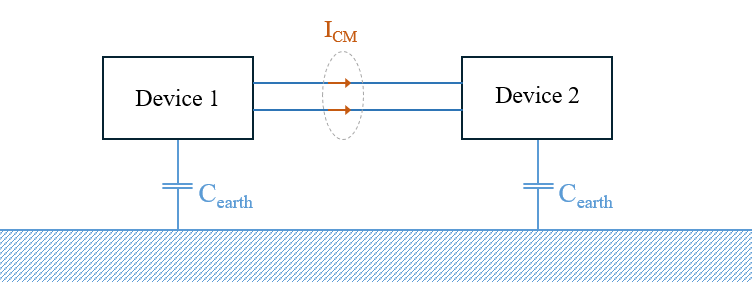EMC Question of the Week: June 24, 2024

Which of these has the largest capacitance to earth?
- rod antenna in a radiated emissions setup
- laptop computer 5 cm above ground
- automobile 20 cm above ground
- commercial aircraft 10 km above ground
Answer
The best answer is “d.” The term capacitance to earth is often used to describe the self-capacitance of an object. That's fair because the self-capacitance of any object located close to earth (relative to earth's diameter) is essentially equal to its mutual capacitance to the earth. Nevertheless, the term capacitance to earth can be a little misleading.
For a single conducting object, like each of the examples above, the main factor determining the object's self-capacitance is its size. A rod antenna or a laptop computer will be 10s of picofarads. An automobile will be hundreds of picofarads. A commercial passenger jet could be several nanofarads.
In a system of conducting objects, the mutual capacitance between any two objects is determined by the amount of electric flux that originates on one object and terminates on the other object (when the first object has a voltage difference relative to the others). In an open configuration, some of the flux originating on the first object doesn't terminate on any of the other objects in the system. That flux is responsible for the object's self-capacitance. (Note: If there is only one object, the object's self-capacitance is equal to its absolute capacitance.) In space, the flux lines that are not captured by the other objects go off to infinity. On earth, they are all eventually captured by the earth.
Why is this important? Because self-capacitances that represent the return paths for common-mode current are often depicted as capacitors to earth (e.g., as shown in the figure). This can lead one to believe that parameters such as a device's height above the earth or even soil resistance play a significant role in determining those currents. This would virtually never be the case. The main parameters affecting the self-capacitance of a conductor are its size and its proximity to other conductors in the system.
As an example, the capacitance to earth (or self-capacitance) of a heatsink located over the ground plane of a circuit board is primarily determined by the heatsink size relative to the circuit board size. Lines of flux emanating from the heatsink that terminate on the circuit board determine the mutual capacitance of the heatsink to the circuit board. Lines of flux not captured by the circuit board determine the heatsink self-capacitance. We can call this the capacitance to earth, but it really has nothing to do with the earth. It would be the same on the moon or halfway between the earth and the moon.
Have a comment or question regarding this solution? We'd like to hear from you. Email us at
